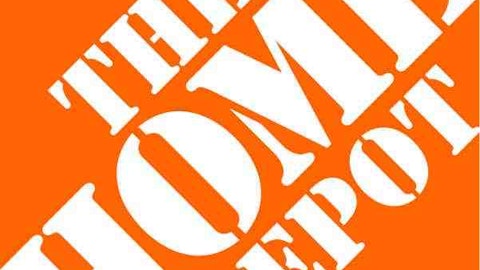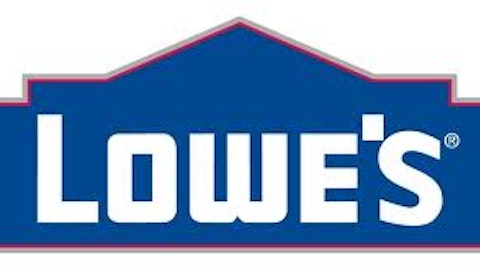The second big difference is the asset turnover. This is a measure of how efficiently each company is using its respective assets to generate sales, and it seems that The Home Depot, Inc. (NYSE:HD) is not only better than Lowe’s in this area but is also improving at a faster pace. Again, Home Depot’s worst year is better than Lowe’s Companies, Inc. (NYSE:LOW) best.
It’s mainly these two things, the EBIT margin and the asset turnover, that lead to Home Depot’s enormous ROE compared to Lowe’s. It seems that Home Depot is simply a better run, more efficient company which is actually becoming even better with time as Lowe’s is stuck in the mud. Home Depot’s return on assets is also about twice that of Lowe’s, right in line with the ROE.
Operationally, there is no real comparison here. Home Depot is superior in basically every way, and by a huge margin to boot.
Comparing valuations
Now we come to valuations. In 2012 Home Depot recorded an EPS of $3.00, putting the current P/E ratio at about 26. Lowe’s, on the other hand, recorded an EPS of $1.69 for a P/E ratio of about 24.
The companies trade at very similar P/E ratios, even though Home Depot is both operationally superior and growing faster. Home Depot has grown its revenue by 13% since 2009, while Lowe’s has grown its revenue by just 7% during the same time. Home Depot has increased its net income by 70% since 2009 compared to Lowe’s barely 10% increase.
It’s important to remember that this growth is from the depths of the housing crisis. Home Depot is actually still a long ways away from its peak revenue and net income from 2006. And given that there’s not likely much more room to grow the margins for Home Depot revenue growth will start to become the main driver. This will lead to slower earnings growth than the past four years, although the housing recover should drive revenue higher.
Lowe’s is clearly overvalued compared to Home Depot, but there’s a turnaround possibility here. What if Lowe’s becomes just as efficient as Home Depot? This would knock the P/E ratio down to around 16, much more attractive than the current value of 24. The problem is that Lowe’s doesn’t seem to be making progress, with the most recent earnings report showing flat sales and missing estimates on all fronts. So for now it seems that Home Depot is the best choice.
The bottom line
Both stocks look expensive, but if you have to buy one Home Depot should be that one. The forward P/E ratio based on the average analyst estimate is a more reasonable 21, but it’s still difficult to pay that much for the stock. Operationally Home Depot leaves Lowe’s in the dust, with a ROE and ROA twice as big and improving each and every year. It’s hard to justify buying Lowe’s except for the turnaround possibility, but that isn’t a very compelling argument based on the progress being made. Home Depot is putting itself in the position to be the dominant home improvement company for years to come, and there’s little that Lowe’s is doing to stop it.
Timothy Green has no position in any stocks mentioned. The Motley Fool recommends Home Depot and Lowe’s. Timothy is a member of The Motley Fool Blog Network — entries represent the personal opinion of the blogger and are not formally edited.
The article The Best Home Improvement Stock originally appeared on Fool.com is written by Timothy Green.
Copyright © 1995 – 2013 The Motley Fool, LLC. All rights reserved. The Motley Fool has a disclosure policy.



